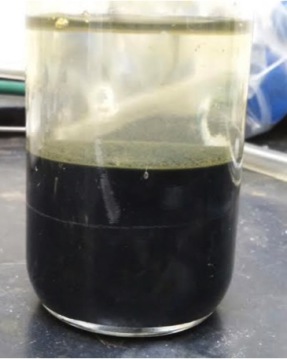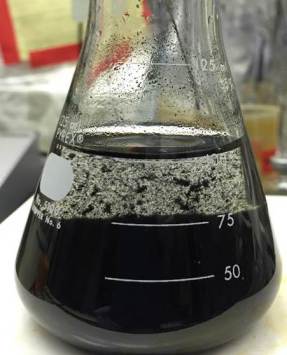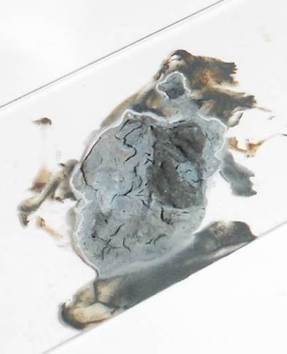Chemistry for Life in Mineral Systems
Minerals can undergo interesting reactions with organic molecules or phosphorus / nitrogen species in the environment. We are interested in how reactive minerals (such as iron oxyhydroxides and iron sulfides) adsorb and concentrate nitrogen and phosphorus species, and how they interplay with organic reactions. Though I approach these studies from an astrobiology standpoint, this type of work is also highly relevant to environmental science. We also collaborate with researchers interested in how minerals may drive elemental cycling in terrestrial marine and soil environments and how these minerals could be useful for wastewater treatment.
We synthesize our own minerals to represent Earth, early Mars, or ocean worlds in order to prevent biological contamination and to obtain mineral phases that are specific to various planetary conditions. Using oxygen-free gloveboxes we can synthesize minerals that are metastable, and we do in-house analysis to prevent sample alteration. Nitrate / phosphate / organic analysis is done via 31P and 1H liquid NMR, ion chromatography, colorimetry, and mineralogical techniques.
Currently funded projects in this topic area:
Environmental Pollution Reduction Inspired by Planetary Science
NASA MOSAICS program; PI: Arezoo Khodayari (CSULA), Co-I's: Winny Dong (Cal Poly Pomona), Laurie Barge & Jessica Weber (JPL)
This is a collaboration between our astrobiology research group and the Environmental Sustainability and Pollution Control (ESPC) lab at Cal State LA. We design student projects at the intersection of planetary science and environmental science, building on our previous collaborations which have resulted in pollution reduction advancements inspired by planetary chemistry. Examples of student research topics in this project include: nitrogen and phosphorus redox chemistry driven by iron minerals (related to CHNOPS chemistry on habitable worlds, and to nitrate and phosphate removal from groundwater); studies of mineral carbonation (relevant to carbon capture, as well as hydrothermal systems on Earth and Mars), studies of cyanide chemistry (relevant to prebiotic chemistry, and wastewater), and studies of perchlorate/chlorate chemistry (relevant to wastewater, and to geochemical reactions on Mars).
Investigating Abiotic Mineral-Organic Chemistry to Interpret Organic Detections on Mars
NASA Mars Science Laboratory Participating Scientist Program; PI: Laurie Barge
The MSL Curiosity rover (Sample Analysis at Mars instrument) has detected organic matter in 3-billion year old mudstones at Gale Crater. Are these organics remnants of abiotic or prebiotic organic chemistry that was favored under ancient Gale crater lake redox and pH conditions? In this project we will conduct laboratory mineral-organic chemistry experiments to determine which organic reactions might have occurred in ancient Gale Crater lake which could lead to the organics observed today.
Phosphorus Redox Chemistry on Rocky and Icy Planets
NASA Habitable Worlds program; PI: Laurie Barge, Co-I: Matt Pasek (University of South Florida)
Phosphorus is an essential element for life, but it is often in short supply, since it is relatively insoluble in the ocean. The sources and abundance of P for prebiotic chemistry are debated, and it is important to understand sources and sinks of P on Mars and the ocean worlds. We investigate the interactions of phosphorus species with minerals in planetary environments: including adsorption and concentration in iron hydroxides / green rust, P chemistry in manganese hydroxides, organic effects on P asorption onto minerals, and the effects of oxidants (e.g. perchlorate) on phosphorus mobility in mineral systems.
Archived projects (meaning that the funding period is ended; however, these remain areas of interest for the research group and are possibilities for students who have their own fellowships or funding):
Mars Sample Return: Connecting Martian Environmental Geochemistry to Returned Samples
Scialog Signatures of Life in the Universe award, PI's: Laurie Barge (JPL), Frances Rivera-Hernandez (Georgia Tech)
A key component of Mars Sample Return (MSR) is to connect the retrived samples to the Martian environments they originated from. However, sometimes a sample taken and sealed from its environment can continue to undergo chemical changes in the vial due to confinement effects. In this Scialog pilot project, we propose to “cache” Mars analog samples in our labs and subject them to Mars-like temperature variations, and measure the changes in mineralogy / geochemistry that result. We can then use this to develop strategies for connecting analysis of the returned Mars samples to the environments on Mars from which they came.
Fate of Nitrate / Nitrite in Planetary Mineral Environments
JPL Researchers on Campus (JROC) program, "Fate of nitrate/nitrite in an ancient ocean on Mars", PI: Laurie Barge, with Prof. Yuk Yung
JPL Spontaneous R&TD, “Can nitrates on Mars drive subsurface organic chemistry?”, PI: Laurie Barge, Co-I: Abigail Fraeman
The Mars Curiosity rover discovered nitrate on Mars, and we know that nitrate and nitrite can undergo abiotic redox reactions in the presence of iron minerals. Nitrate, nitrite and their reduced products can also react with organic molecules and this might lead to prebiotic chemical reactions on early Earth or other worlds. We are exploring how nitrates/nitrites can react with iron on early Earth / Mars, the adsorption properties of nitrate/nitrite onto minerals, whether N-bearing organic molecules can be formed in these systems, and how these reactions might be affected by other redox-active elements such as sulfur.
My 2023 LPSC talk on our recent paper about this work:
Adobe Acrobat document [1.4 MB]




